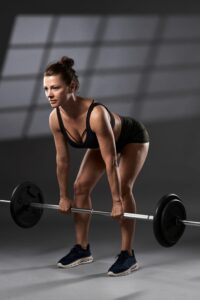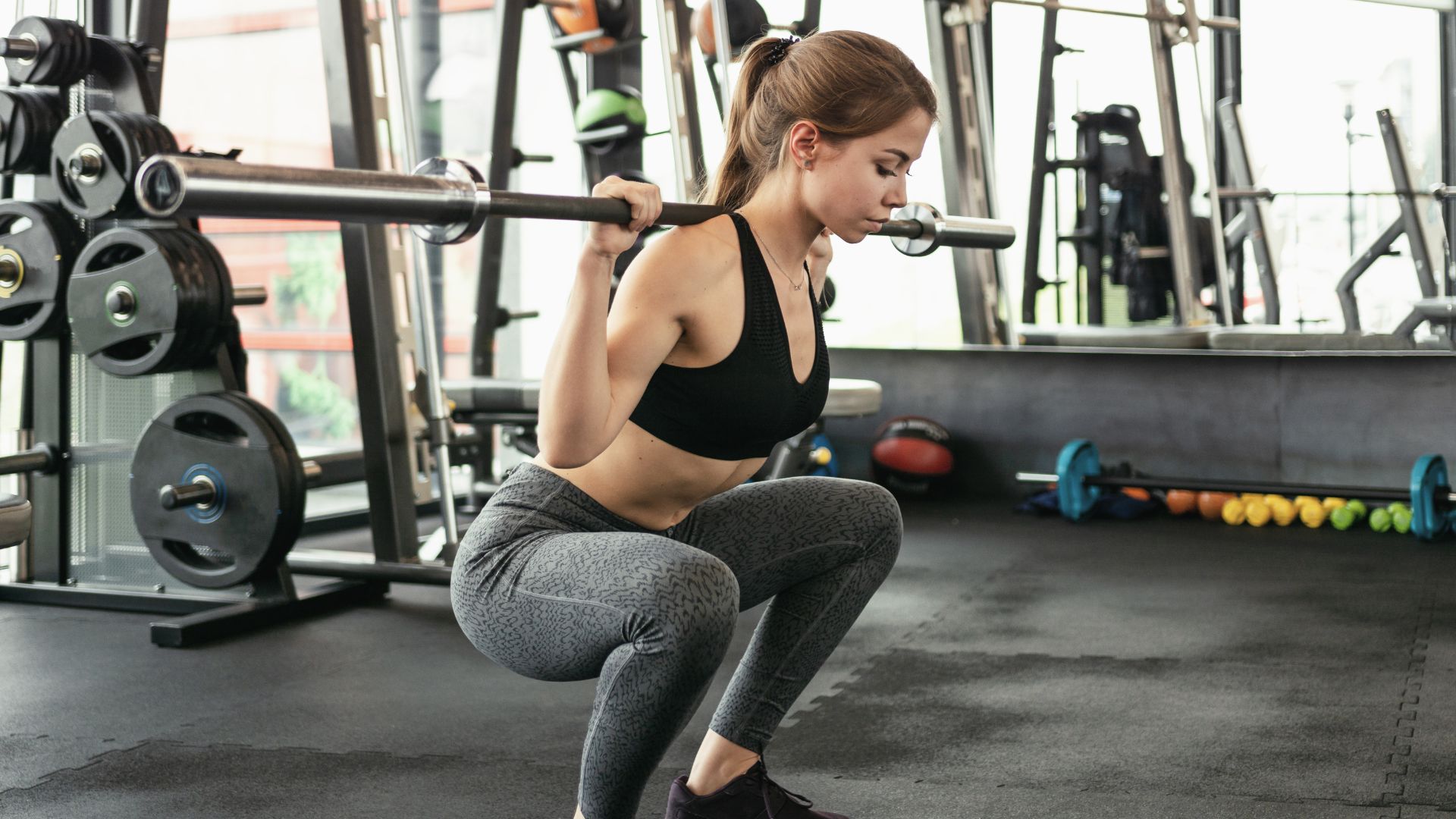As a 15-year-old eager to explore the world of fitness, you’re probably pondering which exercises pack the most punch. Among the plethora of options, compound exercises like back squats, deadlifts, and bench press stand out as giants, each offering a unique set of benefits.
Compound Exercises for 15-Year-Olds: Unveiling the Power of Back Squats, Deadlifts, and Bench Press
Understanding the Importance of Compound Exercises
Before delving into the specifics of each exercise, let’s grasp why compound movements hold such significance, especially during the formative years of adolescence.
Compound exercises engage multiple muscle groups simultaneously, fostering functional strength, stability, and coordination. For teenagers undergoing growth spurts, these exercises can fortify the body and enhance overall athletic performance.
The Power of Back Squats
Back squat
Back squats, hailed as the king of lower-body exercises, wield incredible benefits for youngsters. They primarily target the quadriceps, hamstrings, glutes, and lower back muscles. Performing back squats with proper form not only strengthens these muscle groups but also promotes better posture and balance.
For 15-year-olds, back squats can significantly contribute to lower body strength development, which is vital for various sports activities and overall fitness. However, proper guidance and supervision are crucial to prevent injuries and ensure correct technique.
Exploring the Impact of Deadlifts
Deadlifts
Deadlifts, often dubbed the ultimate full-body strength builder, work wonders for teenagers seeking overall muscle development. They engage the posterior chain, including the hamstrings, glutes, lower back, and even the upper body to some extent. This exercise boosts core stability, improves grip strength, and fosters functional strength.
For 15-year-olds, deadlifts can lay a solid foundation for strength and muscle development, provided they’re executed with proper form and caution. Supervision by a knowledgeable trainer is recommended to avoid potential injury risks.

Unlocking the Benefits of Bench Press
Bench press
Bench press, a staple in any strength training regimen, primarily targets the chest, shoulders, and triceps. It’s an excellent exercise to enhance upper body strength and muscle mass. For teenagers aspiring to build upper body strength and improve athletic performance, bench press can be a valuable addition to their routine.
However, it’s crucial for 15-year-olds to practice bench press under supervision, ensuring correct form and managing weight loads to prevent strain or injury.
So,…: Choosing Wisely
As a 15-year-old looking to maximize your workouts, incorporating these compound exercises back squats, deadlifts, and bench press can significantly boost your strength, muscle development, and overall fitness level.
Remember, while these exercises offer remarkable benefits, proper form, technique, and guidance are paramount, especially for adolescents whose bodies are still developing. Prioritize safety and seek advice from fitness professionals or coaches to derive the most benefit from these powerhouse exercises.
External Resources:
Moving forward
As you embark on your fitness journey, these external resources can provide additional insights into the importance and execution of compound exercises for teenagers. Happy lifting.
Understanding Individual Needs: Tailoring Your Workout
Now that we’ve highlighted the prowess of these compound exercises, it’s essential to consider individual factors before diving headfirst into a routine.
1. Technique Overload: Form is Paramount
For teenagers, mastering proper form takes precedence over the amount of weight lifted. Incorrect technique not only diminishes the exercise’s efficacy but also heightens the risk of injury. Seek guidance from experienced trainers to learn the correct form for each exercise.
2. Listen to Your Body: Rest and Recovery
Amidst the excitement of progress, don’t overlook the significance of rest and recovery. Adequate sleep, proper nutrition, and allowing muscles to recuperate are integral for growth and injury prevention. Overtraining can impede progress and lead to burnout.
3. Diversify Your Routine: Embrace Variety
While these compound exercises are foundational, a well-rounded workout regimen includes a blend of exercises targeting different muscle groups. Incorporate variations to challenge your body and prevent plateauing.
4. Individual Goals Matter: Customize Your Approach
Consider your personal goals. Are you aiming to improve sports performance, build muscle, or enhance overall fitness? Tailor your routine to align with your objectives, ensuring a balanced approach that caters to your specific needs.
Final Thoughts: The Balancing Act
In the realm of fitness, balance reigns supreme. Balancing enthusiasm with caution, intensity with rest, and challenging workouts with proper technique is key, especially for young fitness enthusiasts.
So, how do back squats compare to deadlifts and bench press for 15-year-olds? Each exercise offers unique benefits, and their effectiveness largely depends on individual goals, proper execution, and consistency. Incorporating a mix of these compound exercises into a well-rounded routine can pave the way for a stronger, fitter, and healthier you.
Remember, the journey toward fitness is not a sprint; it’s a marathon. Stay committed, stay safe, and enjoy the transformative power of these compound exercises on your journey to a stronger, more resilient self.
External Resources
- American Council on Exercise – Compound Exercises for Teens
- Bodybuilding.com – The Benefits of Compound Exercises
- PubMed Central – Strength Training in Youth: Which Exercises?
Delve deeper into the world of fitness and discover how compound exercises can elevate your workout routine with these external resources.
Find your balance, enjoy the journey, and unleash the strength within.
| Exercise | Primary Muscles Targeted | Benefits | Considerations |
|---|---|---|---|
| Back Squats | Quadriceps, Hamstrings, Glutes, Lower Back | Strengthens lower body, promotes better posture and balance | Requires proper form and supervision to prevent injury |
| Deadlifts | Hamstrings, Glutes, Lower Back, Upper Body (to some extent) | Builds overall strength, improves core stability and grip strength | Careful attention to form is crucial to avoid injury |
| Bench Press | Chest, Shoulders, Triceps | Enhances upper body strength, aids muscle development | Supervision recommended to ensure proper technique |
Insights on the Comparison
- Muscles Targeted: Each exercise targets different muscle groups, contributing to overall strength and functional fitness.
- Benefits: They offer a range of benefits, from lower body strength (back squats) to overall muscle development (deadlifts) and upper body strength (bench press).
- Considerations: Proper form and supervision are emphasized across all exercises to prevent injury and maximize benefits.
This table serves as a quick reference to highlight the distinct focuses and considerations for each exercise, aiding in making informed choices based on individual fitness goals and requirements.
Wrapping up: Navigating Your Fitness Journey
Embarking on a fitness journey at 15 is a remarkable endeavor, signaling a commitment to a healthier, stronger future. As you navigate the realm of compound exercises like back squats, deadlifts, and bench press, remember these fundamental principles:
1. Knowledge is Power
Educate yourself about proper form, technique, and the significance of balanced workouts. Seek guidance from trainers or reliable resources to ensure a safe and effective fitness routine.
2. Consistency Breeds Progress
Consistency is key. Regular workouts coupled with adequate rest and nutrition will yield sustainable results. Embrace the process and celebrate small victories along the way.
3. Respect Your Body
Listen to your body. Respect its limits and signals. Balance challenging workouts with adequate rest and recovery to avoid burnout and injury.
4. Goals Shape Your Path
Define your goals and tailor your workouts accordingly. Whether it’s enhancing sports performance, building muscle, or improving overall fitness, let your objectives guide your fitness journey.
5. Enjoy the Journey
Above all, relish the journey. Embrace the sweat, the challenges, and the victories. Fitness is not just about physical strength; it’s about resilience, discipline, and mental fortitude.
Incorporating compound exercises like back squats, deadlifts, and bench press into your routine can lay a robust foundation for strength, endurance, and overall fitness. But remember, while these exercises are powerful, they’re just a part of the larger mosaic of fitness.
So, as you step into this transformative journey, embrace knowledge, stay consistent, respect your body, align with your goals, and most importantly, enjoy every step towards becoming the strongest, healthiest version of yourself.
Happy lifting and here’s to a vibrant, energetic, and empowered you.

Hey there, it’s Mike Rrsq, the Editor-in-Chief over at Jsquat.com, and I’m absolutely obsessed with all things squat fitness! I’ve been lucky enough to get some serious recognition for my work in this field. With a solid background in the fitness and wellness industry, I’ve been there right from the get-go, helping shape this website into what it is today.
You see, I’m not just the boss around here; I’m also a passionate contributor. I love sharing my insights through my articles, and trust me, they’re not your run-of-the-mill stuff. Each piece I write is a labor of love, filled with my expertise and real-world experience in the fitness universe. So, if you’re into fitness and looking for some inspiration, you’re in the right place!

